Navigating the PMO's challenge is comparable to the art of navigating a ship through uncharted waters. It demands a constant interplay of adjustments—a meticulous balance of maintaining control while embracing the winds of adaptability throughout the project's voyage.
The PMO must create an environment where risks are effectively managed without stifling innovation. Implementing structured processes and robust risk management is paramount to successfully navigate the tension between uncertainties and execute groundbreaking innovations.
Consistent sense-checking throughout the life of projects and programs, coupled with establishing frameworks to guide efforts, ensures that project management processes are efficient and innovation portfolios align seamlessly with organizational strategy. But how do PMOs steer successful project management and innovation execution, guiding the ship through waves of change?
The role of PMO governance and risk management
Governance refers to the set of policies, processes, and decision-making structures that guide an organization's activities. In the context of PMOs and innovation management, effective governance is essential for several reasons:
Alignment with organizational strategy: Governance ensures that innovation initiatives are aligned with the overarching goals and strategies of the organization. This alignment helps prioritize projects that contribute directly to the company's growth and competitiveness.
Risk management: Innovation inherently involves uncertainty and risk. Governance frameworks help PMOs identify, assess, and manage risks associated with innovation projects. This proactive risk management approach enhances the likelihood of successful project outcomes.
Resource allocation: Governance processes assist PMOs in allocating resources efficiently. This includes not only financial resources but also human capital, technology, and other essential assets. Effective resource allocation is critical for sustaining innovation initiatives in the long run.
Performance monitoring and reporting: Governance frameworks enable the establishment of key performance indicators (KPIs) to measure the success of innovation projects. Regular monitoring and reporting provide insights into project progress, allowing for timely adjustments and improvements.
Stakeholder engagement: Innovation projects often involve multiple stakeholders. Governance ensures clear communication channels and engagement strategies to keep all relevant parties informed and involved throughout the project lifecycle.
Compliance and ethics: Innovation initiatives must adhere to legal and ethical standards. Governance frameworks help PMOs ensure that projects comply with relevant regulations, industry standards, and ethical guidelines.
Continuous improvement: Governance is not static; it evolves with changing organizational needs and external factors. PMOs use governance mechanisms to foster a culture of continuous improvement, learning from both successful and unsuccessful innovation endeavors.
How an Innovation OS helps with PMO governance and risk management
While PMOs oversee processes and support the development of groundbreaking ideas execution, software tools can support establishing effective governance and managing risks across diverse innovation portfolios.
An Innovation OS is like the finely tuned rudder of a ship, skillfully helping PMOs steer your vessel through turbulent waters. By using a central point of coordination and oversight, an Innovation OS helps the PMO minimize duplication of effort, reduce risk, and ensure that projects are aligned with the organization's strategic objectives. The Innovation OS acts as connective tissue between various elements of an organization's innovation ecosystem, providing a structured approach to ideation, project execution, and ongoing improvement.
The 8 pillars of an Innovation OS
1. Strategic alignment:An Innovation OS helps PMOs align innovation initiatives with the organization's overarching strategy. Through the Matrix view in ITONICS, you gain an interactive visualization of all innovation projects, ideas, and strategic focus fields. This tool allows you to cluster projects based on thematic alignment with your company's goals. By using metrics like 'Economic Value' on the Y-axis and 'Strategic Alignment' on the X-axis, you can assess programs based on market value and internal alignment. The Matrix categorizes projects into quadrants: kill, foster, build capabilities, and capitalize. This aids discussions on prioritizing programs for investment and discontinuation.
Striking a balance between quick wins and ambitious projects ensures initiatives align with business goals and have management support. The structured approach directs resources to initiatives with maximum strategic impact.
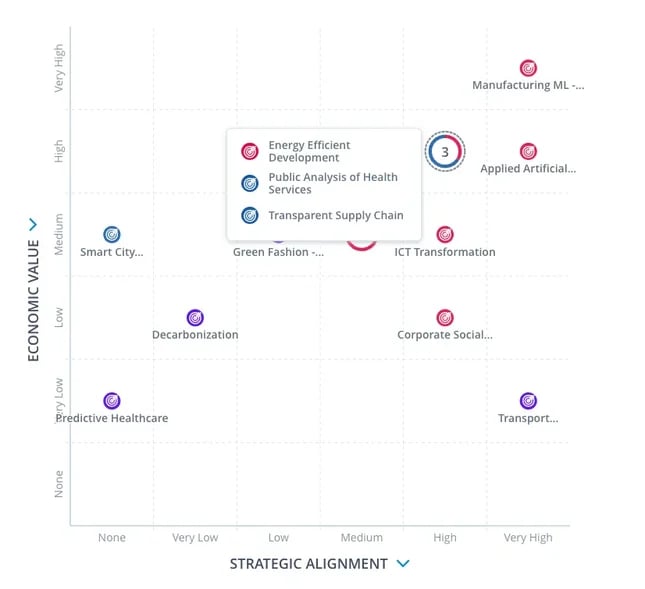
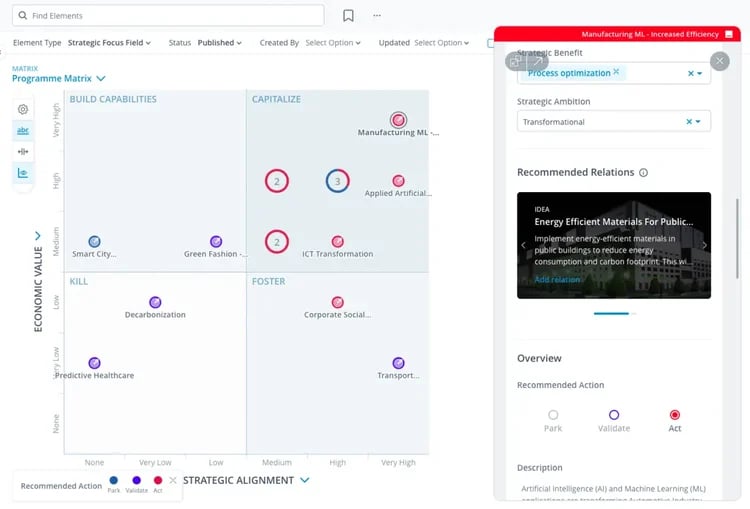
Effectively managing a diverse innovation project portfolio necessitates a systematic approach. The Innovation OS simplifies portfolio management by offering transparency into each project's progress, resource allocation, and potential impact. This empowers PMOs to strike an optimal balance between high-risk, high-reward projects and more conservative endeavors.
Utilizing ITONICS Kanban boards enhances portfolio visibility, enabling you to gain a comprehensive perspective, manage and prioritize projects efficiently, and pinpoint bottlenecks and gaps requiring immediate action. Additionally, Kanban boards facilitate aggregating and tracking key performance indicators (KPIs), influencing budget considerations and aiding strategic decision-making.
.webp?width=800&height=471&name=PMO-governance-blog-graphic-3%20(1).webp)
Ensure organizational alignment by bridging gaps between teams, project managers, stakeholders, and executives. This alignment is crucial for effective governance, ensuring projects contribute to overall success.
Utilize ITONICS templates as building blocks for the system, organizing and structuring portfolio information. This shared platform facilitates collaboration, allowing users to save and share configured views for consistent insights. Shared views enhance communication, enabling team members to discuss, evaluate, provide feedback, and share progress updates. This transparent understanding fosters sustainable governance and democratizes innovation, promoting a culture of continuous improvement.
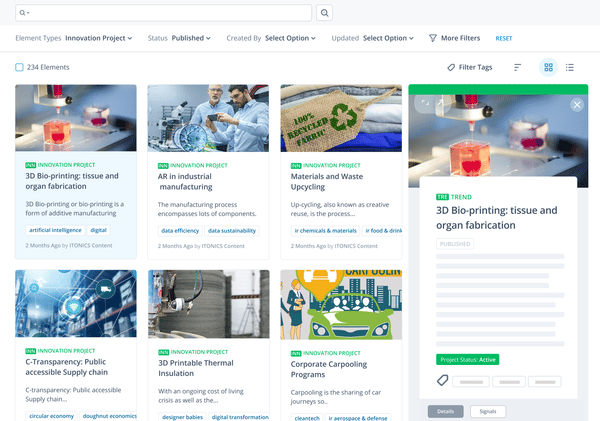
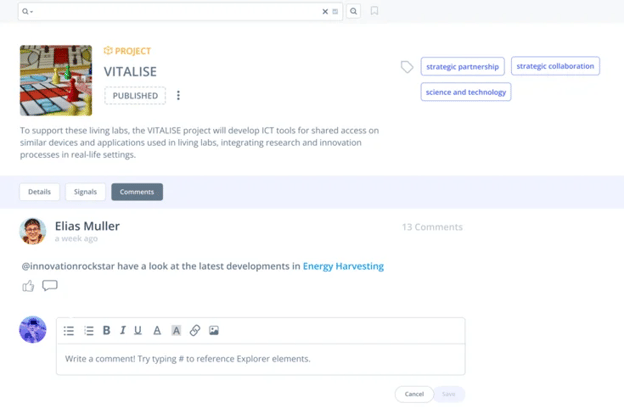
Effectively managing innovation risks is a key challenge. The Innovation OS helps PMOs to systematically identify, assess, and mitigate risks across the entire innovation portfolio. This framework enhances decision-making, significantly improving the likelihood of successful project outcomes.
The ITONICS Innovation OS provides companies with a comprehensive view of their innovation pipeline, aiding in prioritizing a balanced set of initiatives. Through real-time monitoring of essential performance, budget, and planning KPIs via ITONICS Lists, you gain the insights needed for swift decision-making. These Lists allow you to set criteria thresholds, automating risk management within your innovation portfolios. Think of it as a vigilant lighthouse guiding you through potentially turbulent waters, helping you easily spot projects veering off track or consuming excessive budget portions.
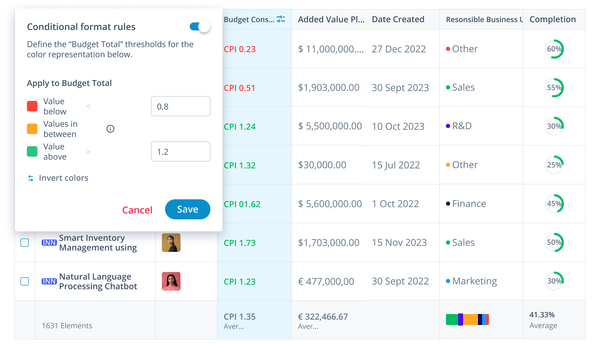
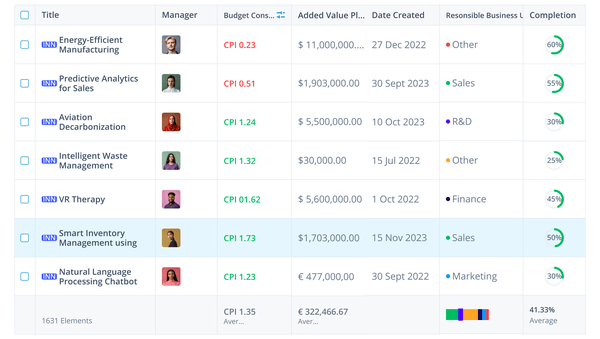
Governance hinges on well-structured decision-making processes. An Innovation OS serves as a robust data aggregator, collecting information from diverse sources within the organization. This data-centric approach equips PMOs with comprehensive insights into innovation project performance, aiding in informed decisions related to resource allocation, prioritization, and strategic alignment.
Centralized views enhance the monitoring of project progress, resource utilization, and potential risks across entire innovation portfolios. Comprehensive analytics tools empower PMOs to assess innovation project performance against predefined KPIs. This data-driven evaluation facilitates strategic decision-making by providing insights into successful practices and areas that may require adjustments.
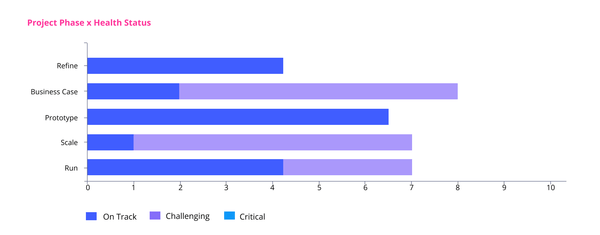
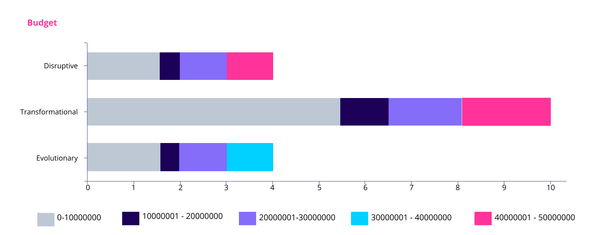
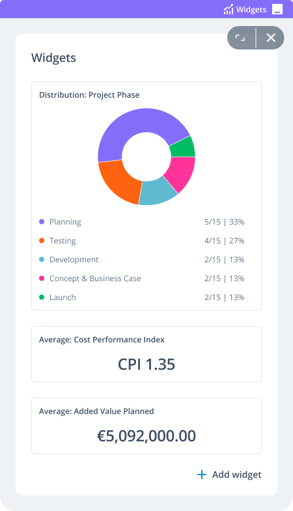 |
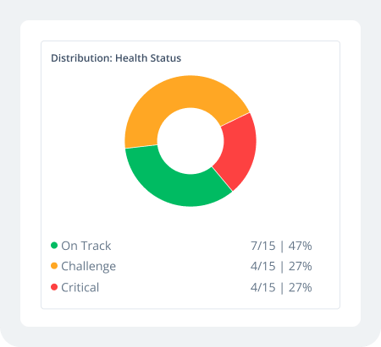 |
6. Real-time visibility:
Effective governance demands instantaneous insight into project performance. The OS presents dashboards and reporting tools, supplying PMOs with current key performance indicators (KPIs) for timely interventions and adjustments. Real-time monitoring features enable PMOs to maintain continuous vigilance on KPIs. This constant oversight streamlines issue identification, project health assessment, and swift responses to evolving circumstances. Real-time data fosters proactive decision-making, ensuring a dynamic and responsive approach to project governance.
7. Resource optimization:Streamlining resource allocation is fundamental to effective governance, and the Innovation OS plays a pivotal role in achieving this efficiency. By centralizing all resource data, the OS provides real-time monitoring in dynamic environments, facilitating swift decision-making. This consolidation minimizes errors associated with managing resources across diverse platforms, ensuring consistent and accurate reporting. This, in turn, aids in assessing the success of innovation initiatives and guides future strategy refinement.
In ITONICS, you have the ability to directly adjust budgets or other information, receiving instant visual feedback on how these changes impact key performance indicators (KPIs). This functionality proves invaluable when quick assessments are needed due to recent changes or when specific numbers need adjustment for an overview of the overall portfolio.
Equipped with user-friendly tools for tracking, monitoring, and reporting, confidently navigate the intricate financial landscape of innovation. Ensure optimal resource allocation, strategic budgeting, and effective risk management, supported by a platform designed to enhance decision-making in the ever-evolving realm of innovation.
8. Continuous improvement:
Governance is iterative, and the Innovation OS fosters continuous improvement. Through data analysis and feedback from innovation projects, PMOs refine governance processes to adapt to evolving organizational needs.
The innovation OS collects and analyzes project data, providing insights into performance, risk factors, and governance effectiveness. This data-driven approach identifies areas for improvement and refines strategies. Feedback loops from team members and stakeholders support ongoing improvement initiatives and enables PMOs to define and track KPIs for real-time insights, prompting proactive adjustments. The flexibility of innovation management platforms allows PMOs to adapt workflows, accommodating lessons learned and adjusting governance structures for continuous improvement.
PMO governance and risk management: In closing
The role of PMO governance and risk management is multifaceted, encompassing strategic alignment, portfolio management, communication, risk mitigation, structured decision-making, and real-time visibility. The Innovation OS emerges as a strategic ally, functioning as the finely tuned rudder that skillfully guides the PMO through turbulent waters.
By leveraging tools like ITONICS, PMOs can streamline processes, enhance collaboration, and facilitate informed decision-making. The Innovation OS acts as a connective tissue within the organization's innovation ecosystem, providing structure to ideation, project execution, and ongoing improvement.









